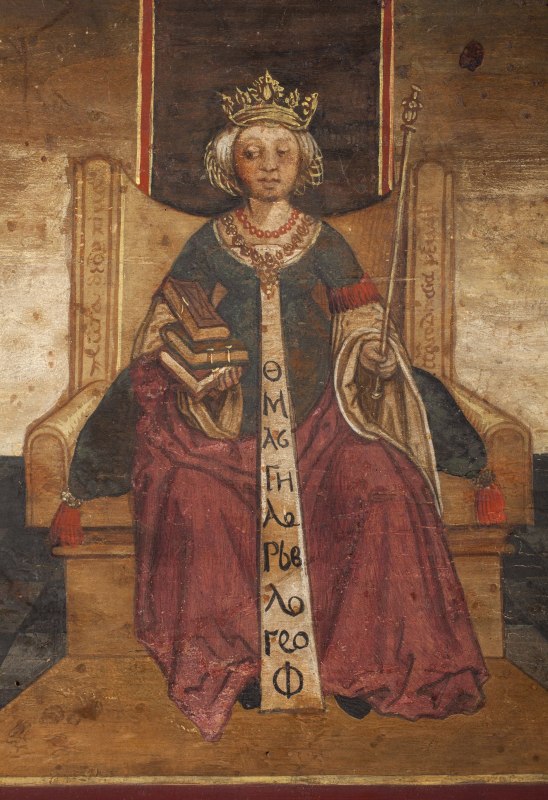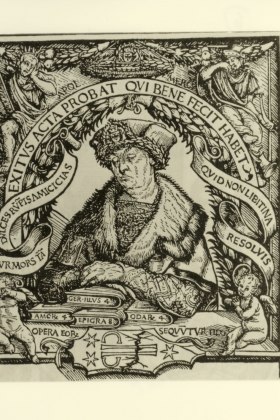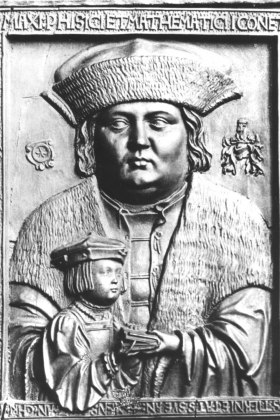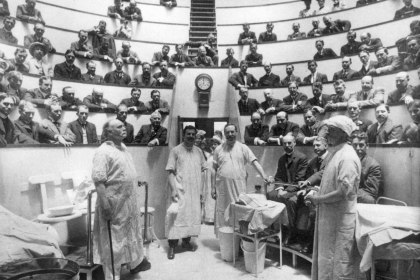Renaissance humanism at the University of Vienna
The era of “Renaissance humanism” is marked by a spiritual orientation towards antiquity and its achievements. Starting in the cities, churches and courts of 14th century Italy, this educational movement spread to the territories of the Holy Roman Empire during the 15th and 16th centuries. Science and academic teachings, as well as cultural life in general experienced a radical reorientation.
The spread of humanism in Europe
Due to the invention of the printing press, humanistic literature was able to spread quickly at the beginning of the Modern Age. Authors from the antiquity and the early Middle Ages were rediscovered and their works were republished in print in revised “cleaned” versions. Classic languages, the urban lifestyle and the life-affirming principles of the humanists were valued highly. This stood in contrast with the scholastic educational tradition and the intellectuals’ monkish way of life and to their work which was oriented towards the afterlife. Humanists scorned the “Gothic” Middle Ages and their “barbaric mock Latin”. They opposed the stagnant scholastic teaching system with its outdated text books at the late medieval universities.
The humanistic intellectual movement initiated by Francesco Petrarca (1304-1374) put language at the center of human education. Humanism flourished in the sovereigns’ courts and in private intellectual circles. Gradually, the studia humanitatis also entered the curricula of central European schools and universities at the turn of the 15th to the 16th century. Central humanistic disciplines were considered to be poetics, rhetoric, classical languages (Latin, Greek, Hebrew), as well as the “humanistic natural sciences” (scientiae mathematicae), in particular mathematics, astronomy and astrology, and soon also history and moral philosophy. Educational travels by many intellectuals and students were responsible for the humanistic transfer of knowledge to the north. Support of the movement by open-minded sovereigns also helped this cause. Noteworthy in this respect are for example the Luxembourger Emperor Charles IV (1316-1378) and his son, Emperor Sigismund (1368-1437), Louis the Great of Anjou (1326-1382), king of Hungary and Poland, and the Hungarian humanist king Matthias Corvinus (Hunyadi, 1443-1490).
Humanists and poets in Vienna
In Vienna, Enea Silvio Piccolomini (1405-1464) – the later Pope Pius II (1458) – introduced humanism to the court of Emperor Frederick III (1452-1493). In 1442 he had already received the poet’s laurels. He is considered the “pioneer of Renaissance humanism in Austria”.
The first German-speaking intellectual to receive the coveted laurel crown (laurea) was the humanist Konrad Celtis (1459-1508) from Franconia, whose poet crowning was celebrated in Nuremberg in 1487. The crown was considered to be the highest honor and visible symbol of a humanistic intellectual following the ancient example.
Emperor Maximilian I (1459-1519) is regarded as a significant supporter of humanism. He employed famous intellectuals at his court that spread the ideology, such as Hieronymus Balbus, Johannes Cuspinianus, Johannes Stabius, Georg Tannstetter-Collimitius etc. During his reign Maximilian crowned 29 candidates with the poet’s laurels. As early as 1494 he had funded the first academic chair for Roman law at the Viennese Faculty of Law. In 1497 he appointed the parade humanist Konrad Celtis to the University of Vienna. He was to represent the leading humanistic disciplines of poetics and rhetoric. At first he did this outside of the Faculty of Arts, since they still were quite reserved towards the humanists. This was not necessarily due to the modern ideas, but to social tension between the open-minded, sometimes pretentious poets and the artist magisters who were used to a monasterial way of life and who feared for their privileges.
Konrad Celtis, the “arch-humanist”, had been educated at the Italian centers of humanistic knowledge in Padua, Ferrara, Bologna, Florence, Venice and Rome. Then he had taught at prestigious universities such as Erfurt, Rostock, Leipzig, Cracow and Ingolstadt. He joined several humanist circles on his travels and participated in the foundation of humanistic intellectual societies in Heidelberg, Buda and Vienna (Sodalitas Danubiana Vondobonensis).
In 1501 Maximilian I founded the Collegium Poetarum et Mathematicorum at the University of Vienna and appointed Konrad Celtis as its head. It encompassed four humanistic academic chairs outside of the Faculty of Arts, paid for by the Landesfürst (prince). The humanistic subjects only became a part of the Faculty of Arts in the course of the university reforms implemented by Ferdinand I in 1537. The Faculty of Arts subsequently adopted the name “Philosophical Faculty”.
Zuletzt aktualisiert am 04/15/24
-
Enea Silvio Piccolomini (Papst Pius II.)
18.10.1405–15.8.1464 -
Konrad Celtis
1.2.1459–4.2.1508 -
Johannes Cuspinianus
Monatsende.12.1473–19.4.1529 -
Georg Tannstetter
4.1482–26.3.1535
-
University reforms under Ferdinand I.
1521–1554









